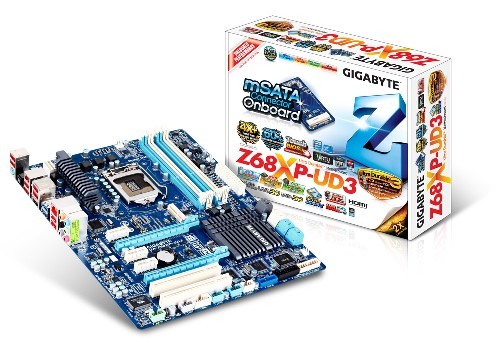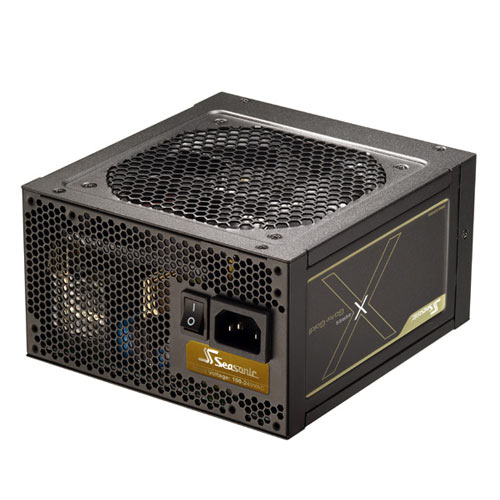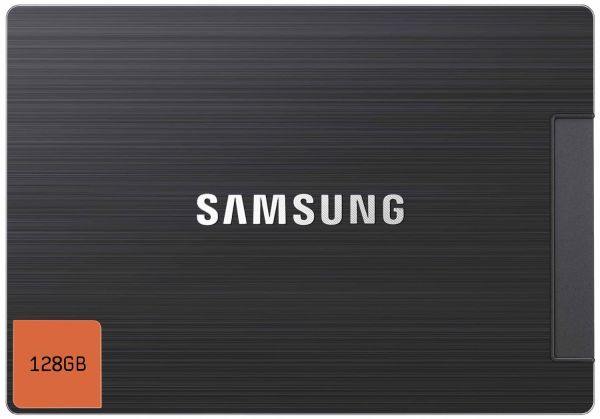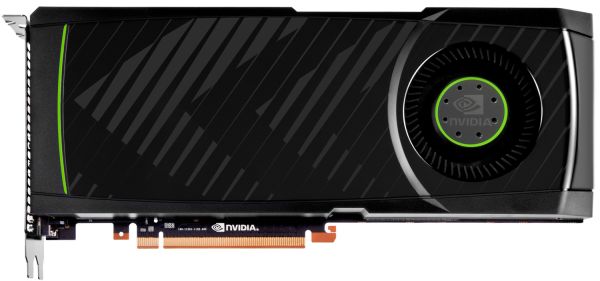Holiday 2011 Mainstream High-End Buyer's Guide
by Zach Throckmorton on December 9, 2011 12:00 AM EST- Posted in
- Guides
- AMD
- Intel
- Sandy Bridge
- CrossFire
- Sandy Bridge E
- Holiday 2011
- NVIDIA
Gamer's delight
While the HTPC on the previous page is designed for intensive video transcoding and therefore is built around a Intel Core i7-2600K with Hyper-Threading, this rig is devoted to gaming and therefore utilizes an Intel Core i5-2500K. You can see clearly from Bench that most games do not benefit from the 2600K's Hyper-Threading. Instead, it's a better idea to spend that $100 or so savings elsewhere if your primary consideration is gaming.
Because games do respond well to increased clockspeeds, and the Core i5-2500K is a multiplier unlocked CPU (so overclocking it is a breeze), we're recommending Corsair's H80 closed-loop CPU water cooler. All-in-one water-cooling kits like this Corsair are not only (generally speaking) great CPU coolers, they're also an easy introduction to more sophisticated water-cooling setups in case you're interested in exploring water-cooling at some point in the future. Jared recently reviewed the H60, H80, and H100—all of these fit in the Fractal Design Define R3 case we're recommending.

Gigabyte's GA-Z68XP-UD3 is an ATX form factor motherboard with all of the bells and whistles. It is a very capable overclocker and in my experience very reliable as well. While it's definitely not in the highest echelon of LGA 1155 motherboards, it is a solid higher-end mainstream motherboard. Perhaps of most interest to gamers, it supports both SLI and CrossFire—more on those in a moment.
Though not many current games benefit much from more than 8GB of DDR3, given the low prices of RAM and the larger budget, we're recommending two 8GB kits for 16GB total RAM. The G.SKILL Ripjaws X in the parts list below are great performers, but there are many other comparable kits.
Games don't always benefit much from an SSD, either, but again given the bigger budget, this build has a 128GB Samsung 830 Series SSD for its OS and application drive. That's enough space for plenty of both productivity and entertainment applications. I cannot stress enough how much general responsiveness and overall, day-to-day computing benefit from the addition of an SSD. Samsung's 830 Series drives are already developing a reputation for reliability, and as Anand found in his recent review, they also perform very well. In case your game—or media—library is very large (e.g. you play Rage!), the stalwart Samsung F3 1TB hard drive should be enough space for even the most prolific gamer.
The heart of any gaming rig is its GPU—or GPUs. The NVIDIA GTX 580 is the most powerful single GPU discrete video card available, and at $500, it's really pushing the envelope for "mainstream". You can see how it fares in Bench. The GTX 580 will play Crysis: Warhead at 1920x1200 resolution on gamer quality settings at an average of 60 frames per second. So, yes, it will run Crysis! But what if you're interested in SLI/CrossFire? $500 will buy one GTX 580—or two AMD Radeon HD 6950s. In general CrossFired 6950s outperform a single GTX 580, in some cases by a large margin. You can see how the two configurations compare on Bench. That said, I've yet to see a CrossFire (or SLI) setup that didn't have a few quirks—or downright aggravating issues. If you don't want to bother with SLI/CrossFire, the GTX 580 is your best bet (unless you want to plunk down even more money on a single card with dual GPUs, but I don't consider those much better than SLI/CF setups). If you are willing to put the additional time and effort into a CrossFire/SLI setup, you'll get a lot more bang for your buck with two Radeon HD 6950s.

SeaSonic's X850 is an extremely well-built 850W power supply capable of powering this impressive system whether you decide to go with a single GTX 580 or two Radeon HD 6950s. That said, the Bench test system hit 850W with two GTX 580s in SLI under Furmark—so if you plan to go with one GTX 580 initially and add a second card later, you will want to upgrade to a more powerful PSU. Finally, everything is housed in a Fractal Design Define R3. I recently recommended this case in the midrange buyer's guide and while there are other comparable cases like Corsair's 500R and Antec's P280, I like that the Fractal R3 is less expensive and, in my opinion, looks better.
| Component | Product | Price |
| CPU | Intel Core i5-2500K | $220 |
| CPU cooler | Corsair H80 | $94 |
| Motherboard | Gigabyte GA-Z68XP-UD3 ATX | $150 |
| RAM | (2) G.SKILL Ripjaws X 8GB (2x4GB) DDR3 1600 | $60 (total) |
| GPU | EVGA GeForce GTX 580 1536MB GDDR5 | $500 |
| GPU alternate | (2) XFX Radeon HD 6950 1GB GDDR5 | $500 (total) |
| SSD | Samsung 830 MZ-7PC128D/AM 128GB | $230 |
| HDD | Samsung Spinpoint F3 1TB | $150 |
| Power supply | SeaSonic X850 Gold 850W | $150 |
| Case | Fractal Design Define R3 | $110 |
| Optical drive | ASUS DRW-24B1ST/BLK/B/AS | $19 |
| Operating system | Microsoft Windows 7 Home Premium 64-bit (OEM) | $100 |
| Total: | $1783 | |
Next up, we're sacrificing graphics capability/gameplay ability for raw CPU speed. If you want an incredibly powerful computer, check the next page.












52 Comments
View All Comments
Z Throckmorton - Friday, December 9, 2011 - link
Hi Araemo - Anand performed a great analysis of RST a few months ago (http://www.anandtech.com/show/4329/intel-z68-chips... You can see that RST definitely does not suck compared to just going with a dedicated OS/app SSD. That said, it's also clear that RST's utility really depends on usage patterns. From the sound of it, it sounds like you'd really benefit from a 64GB caching SSD. I personally have not used RST for an extended period of time; I've just moved from a 40GB to 80GB to 120GB SSD as funds have permitted. I tinkered with it and found the time and effort was simply not worth it compared to the cost of a dedicated OS/app SSD. ...Watch for sales (Intel's 320 120GB came close to $100AR on Black Friday a few weeks ago), or grab a used one off of our FS/T forums! :)Araemo - Friday, December 9, 2011 - link
I did read that, but I forgot about the after-usage tests.. though unless I'm misreading it, he doesn't go into how long before you get back to the good speeds, is it after one more launch, or does it take a few to re-evict the other apps?DanNeely - Friday, December 9, 2011 - link
I bought a 120 about 2 years ago, and am waiting for a 240gb model to drop below $300. I haven't seen anything except sandforce get that low, and after all the firmware problems they've had I'm hesitant to buy one even though the BSOD bug has supposedly been fixed.FormulaRedline - Friday, December 9, 2011 - link
Unless you plan to attach your ~$2,000 gaming machine to a $90 monitor, I think the gaming system with a single 580GTX is going to be severly limited by the graphics card. If I was doing a $2k build today, specifically for gaming, I'd find a way to squeeze 580 SLI in there. By no means do I think it unreasonable to spend half the money of a gaming build on the GPUs. Certainly you should be allocating more than a quarter.Drop that SSD down to 64GB (basically the OS and some common programs), cut back the HDD storage (add more when prices drop), get a smaller PSU (I run 480GTX SLI, more power hungry cards, with my Kill-A-Watt showing draw during gaming of <550W...so I question the bench results), swap the water cooler for a good $30-$40 air cooler (you'll still be GPU bound for gaming), and use the freed up cash on more GPU. SLI drivers are so good these days that even a 570 SLI setup would be a huge step up from a single 580. That is computer that will run the newest games on the highest setting at big resolutions (2560x1600@60Hz) or even 3D (1920x1080@120Hz).
JarredWalton - Friday, December 9, 2011 - link
I'm running a 30" LCD off a single GTX 580, and even the latest games are generally playable at max details and 2560x1600. Batman: Arkham City runs fine with DX11 + AA + PhysX (post-patch), Skyrim gets 8xAA and DX11, Rage could do max details and then some, Battlefield 3 is at least 40+ FPS... I hope you get the point. My biggest gripe with a single GTX 580 is actually something SLI GTX 580 won't really fix: 1.5GB VRAM. At maximum detail, we're now starting to see games push beyond that mark, even at 1920x1200/1080p, so some time in the next year or so I expect 1.5GB to prove insufficient.FormulaRedline - Friday, December 9, 2011 - link
Maybe so (unfortunately we're still in the area of console ports for systems that came out in 2005). However, consider a modded Skyrim running high resolution textures with AF x16 and AO enabled in the Nvidia control panel. Or, as you point out, some stock games like BF3. These will bring the article's machine below VSYNC, while the added GPU power would add framrate back.In other words, there is something to gain, even if only in some games (though I would also argue those games are the most relevant), while the cuts to get there do not sacrifice anything. Yes, watercooling to get a few more MHz out of the CPU or a bigger SSD to load the whole CS5 suite onto would be great for a productivity machine, but that's not the purpose of this build.
As to the 1.5GB...I'm with you there. Personally, I wouldn't be building a machine right now; I'd be waiting for the next generation of cards at this point. Of course always waiting for the next best thing is a losing game, but I think we're out of the sweet spot for top end GPUs now.
l_d_allan - Friday, December 9, 2011 - link
ggathagan - Friday, December 9, 2011 - link
Not a particularly intelligent comment, given the plethora of CPU, GPU, PSU, motherboard, memory cooling and case reviews on this site that supply the very metrics you crave.This isn't a review, it's a buyer's guide
coffeejunkee - Friday, December 9, 2011 - link
These systems look fairly decent but I think you'll need a 3-pin y-splitter for the workstation to connect both the PC-9F front fans.The R3 can fit up to 7 fans, in that case you'll probably want a separate fancontroller since the GA-Z68XP-UD3 has only 1 controllable casefanheader.
Not convinced about H80 though, doesn't seem worth the money to me when you can get Thermalright Macho for less than half the price. 'Introduction to real watercooling' sounds like a non-argument to me.
ven - Friday, December 9, 2011 - link
In the gaming ring everything else is fine, but as for the case i think CM HAF 912 will be more suitable than R3. Fully vented front panel than compared to small sideways front intake in R3, so more air flow and also if you remove the HDD cage(CM) Graphics card will get direct cooling from one of the front panel fan it is also much cheaper than R3($59)As for the motherboard, Asus Maximus-iv Gene-Z is also nice option both the Gigabyte and Asus are almost same in the spec, Asus has some more whistles like ROG connect,Better UEFI, and also it looks cool.